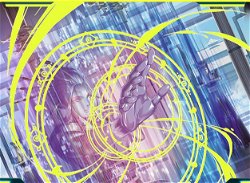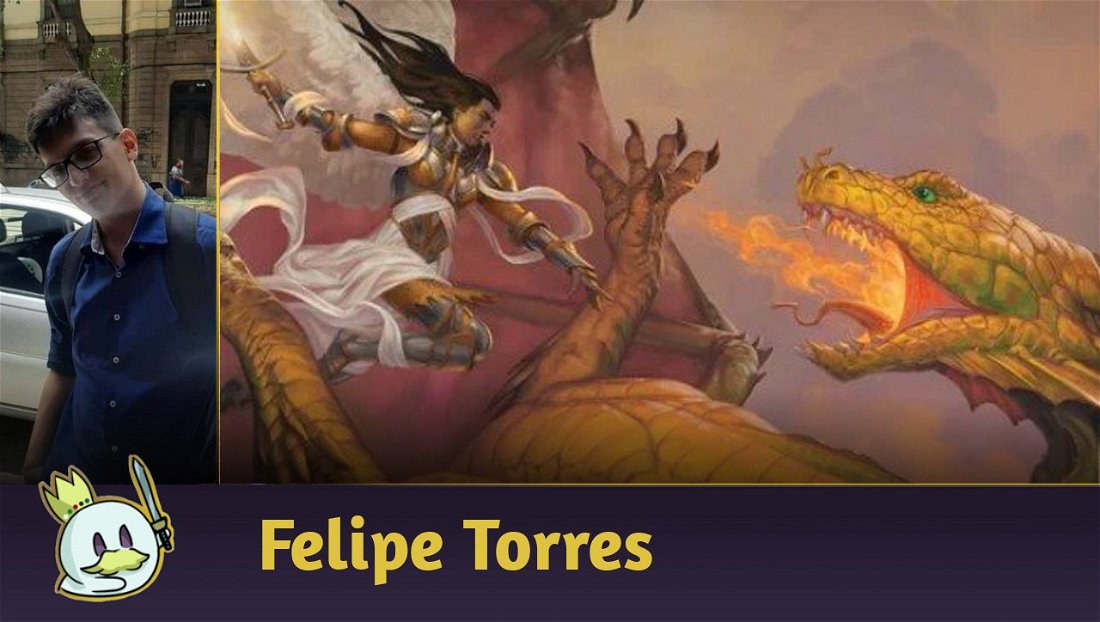About the Deck
Usually, Pauper is not a format where the combo archetype dominates the competitive scene, but from time to time, it is possible to find a deck doing good results — but, regardless of that, if you are a combo player, and you play Pauper, certainly Walls is a deck to be reckoned with.

The deck has just been presented with an important addition, Shield-Wall Sentinel has arrived to give even more consistency to the deck, making that, at least currently, the version focused only on the combo is more interesting than the versions that run creatures like Mulldrifter or Cascade.
Today we are going to analyze a list piloted by the player APass72, known for playing with the deck and who made some 5-0 in the MTGO leagues during this season:
How the Combo Works
Before going through the list, I will explain some general features of Walls for those who aren't yet very familiar with the deck.
Win Conditions
In the list above there are two ways to win the game and both require you to be able to produce infinite mana.

The best known win condition is to cause direct damage to the opponent through Valakut Invoker.
Another way to win the game is to activate the Secret Door ability to venture mainly into the Lost Mine of Phandelver dealing one point of damage to the opponent every time you pass through the Dark Pool. Generally, this path is much more relaxed in tabletop, since in MTGO it is necessary to generate a lot of mana to complete an adventure and occasionally, it will be more advantageous to use the scry and draws to find Valakut Invoker and finish the game faster.
Anyway, the images below show the various adventure options you can choose when you activate the Secret Door's ability:

An important observation about the combo is that usually the win conditions are the last pieces to enter the battlefield, that is, if they enter the game, and you are already generating infinite mana, the opponent's removals will not be a problem, since it is possible to generate mana in response to the removal and continue the combo without any problems. This detail is important to define the choice between Valakut Invoker and Bloodrite Invoker because in practice the biggest advantage of the black creature is not being answerer by Hydroblast.
Moreover, Valakut has the advantage of removing creatures in emergencies, when the combo is not yet on the board, but it is possible to generate a lot of mana. The best examples are against Elves or on the mirror, where the opponent has no removal and Valakut can delay their plan.
Generating infinite mana
Now that you know the winconditions, you need to know how to generate infinite mana, and it's relatively easy to understand how to do this:

The deck has many walls, and with them in play, it will be possible to generate a lot of mana with Axebane Guardian. With this scenario, just pair the Galvanic Alchemist on Axebane, to be able to untap it and repeat the process several times.
Another possibility that produces the same effect is to enchant Axebane with Freed from the Real.
It is worth noting that it is also possible to generate infinite mana with Overgrown Battlement, as long as Orochi Leafcaller is on the battlefield to filter the mana colors, as we need blue mana to untap it.
Some important notes about Galvanic Alchemist and Freed from the Real:

The advantage of enchantment is the cost to untap the creature, that is, it is possible to generate infinite mana with only two walls in play, while the alchemist needs at least four.
Although these two cards can be found by Drift of Phantasms, the advantage of Galvanic Alchemist is that because it's a creature, it can also be found with Lead the Stampede and Winding Way, as well as returning from the graveyard with Pulse of Murasa and Reaping the Graves.
Combo support
In addition to the walls, and the combo pieces, the deck has some cards that serve as support for its proper functioning:

Quirion Ranger: Serves to speed up the deck, untapping creatures that generate mana and providing more spells to be cast each turn.
Saruli Caretaker and Jaspera Sentinel: These are relatively recent additions that replaced creatures like Elvish Mystic and Loam Dryad. They are essential since they increase colored mana, which will be necessary to cast the combo pieces that aren't green.

Orochi Leafcaller: Another creature that helps filter mana colors. It becomes even more important for allowing the combo to happen without Axebane Guardian, who is the main target of the opponent's removals.
Vivien's Grizzly: It can practically be considered a third win condition, since it allows you to draw the whole deck if you have infinite mana. That is, you will find all the pieces of the combo and if you do so at a favorable time, the combo is guaranteed.
Drift of Phantasms: Despite being a wall, you will rarely cast this creature. It is in the deck 100% because of Transmute, that allows you to fetch any three mana card from the deck, that is, any part of the combo, or even some support pieces like Vivien's Grizzly, Lead the Stampede, Pulse of Murasa, Reaping the Graves or Tuktuk Rubblefort.

Tuktuk Rubblefort: Having haste means you can combo at any time on your turn, and that's sure to stir up your opponent's emotions, who usually don't hesitate too long to remove it from play. This opponent's discomfort is essential for them to make mistakes, which is why I think it's vital to have a copy of the card in the deck.
Shield-Wall Sentinel: It's a wall that allows you to find other walls in the deck. In certain situations, it will be the missing piece for you to directly find the Secret Door and complete your combo.

Pulse of Murasa and Reaping the Graves: The main weapons against Walls are interactions, so you need to be prepared to recover your cards from the graveyard. Also, Reaping the Graves has a nice synergy with Drift of Phantasms.
One of my favorite plays is to transmute several times and then cast Reaping the Graves to recover multiple Drift of Phantasm from the graveyard, thus having alternatives to combo even if some piece is countered.
Mnemonic Wall: It's not unanimity on the lists, but I think it's important to have the security of recovering important cards from the graveyard.
Other options
If you want some extra options for your local Metagame, I have a few suggestions worth looking into:

Shield Sphere is an option to deal with aggro decks.
Mirrorshell Crab is a counterspell option that synergizes with the deck because it's a creature.
Sideboard Guide
Just like Slivers, Walls' sideboard should seek synergy with Winding Way and Lead the Stampede, that is, most of the time you'll opt for cards that are creatures or that have Flashback. This is important to know to understand the choices on this list.
In addition, I always like to emphasize that there are several factors that can influence side-in and side-out decisions during a match, in addition to our personal choices, details such as the opponent's posture, cards that we saw or did not see must also be considered, so don't get too hung up on this guide. It's here to help, but follow your instincts if something doesn't make sense to you.
Kuldotha Burn
Despite being a difficult matchup, it has already been worse. Walls can block goblin tokens well, but suffers when the opponent plays a Kessig Flamebreather early on. The main side-in in this matchup is Healer of the Glade as it gains life, blocks tokens and can be recovered with Pulse of Murasa.
IN

OUT

Affinity
This matchup is pretty tricky when it comes to versions that use Krark-Clan Shaman in the main deck. The main side-in here is Deglamer, which at the start of the match can delay and disrupt the opponent's manabase.
Otherwise, Crimson Acolyte can help with some protection and Gorilla Shaman is here to do what it knows how to do. The possibility of playing Deglamer to the graveyard or to the bottom of the deck isn't such a bad thing, since its usefulness is lost as the game progresses.
IN

OUT

Dimir Terror
Get ready to take Snuff Out and Counterspell. Other than that, it's not necessary to change the post-side game plan too much.
IN

OUT

Bogles
We have good side-in options in this match.
IN

OUT

Caw Gates
It is recommended to add some answers against Journey to Nowhere which will end up being useful against The Modern Age.
IN

OUT

Boros Synthesizer
IN

OUT

Conclusion
I've been playing with the deck on MTGO for a while, my first impressions were great, but it's important to warn that the platform is very damaging to this type of combo, forcing the player to make several clicks and spend a good amount of time to beat the opponent.
So take this into account if you're considering playing the digital version. But that's a great list to run on tabletop events since everything is more fluid and faster.
In addition, feel free to add any comments on the article, it will be a pleasure to talk about the deck with you.
Thank you very much for reading, and until next time.















— Comments 0
, Reactions 1
Be the first to comment